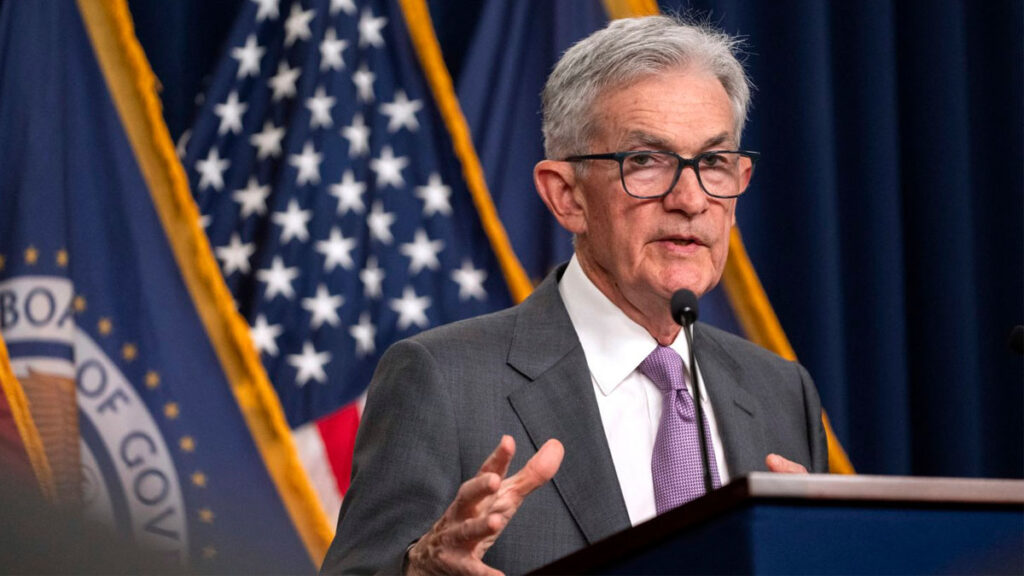I just got back from a few days out of town from a place in the mountains that had little to no internet or communication with the news of the day. It was quite refreshing not to hear the same back and forth political nonsense et al that can encompass much of one’s thoughts if you let it. I don’t feel that I missed much, as the kinder, gentler political landscape has not come to fruition as many had hoped. It never will. The same hype is always present in the financial markets, which is why the likes of Warren Buffett and other long term value investors don’t bother to look at quarterly financial reports. They’re in it for the long haul. With that said, all eyes of interest are on the next Federal Reserve meeting in September and what a rate move, or lack thereof, would do to the election.
Depending upon which side of the aisle you sit on, the economic claims of each party are either fact or fiction or likely a mix of both. Either way, a move on interest rates by the Fed in September will likely upset one side or the other, and may actually tip the scales in favor of Trump or Harris, as Americans see economic issues as the number one concern of theirs. While the Federal Reserve is quasi-governmental, it stakes no political claim to one candidate or the other. Often a Federal Reserve chair is appointed by one administration and carried on to the next and the next, albeit a Democrat or Republican who place the chair there.
One thing for sure it will all be about perception. Obviously, a rate cut in September will be utilized by Harris and Democrats at large to boast that the economy is recovering and interest rates, inflation, etc. are getting better for the consumer. The lack of a rate cut will be used to show that the economy is slowing with a recession possible, with rates and inflation remaining too high for me and you. At the moment the momentum is in favor of the incumbent party as the financial futures market is pricing in a 100% chance of a rate cut in September.
Fed Chairman Jerome Powell walks a fine line in communicating policy to the public while maintaining a political-free stance. Powell stated recently, “Anything that we do before, during or after the election will be based on the data, the outlook and the balance of risks, and not on anything else.” According to the Wall Street Journal, The Fed lifted rates from near zero two years ago and quickly reeled off the most rapid interval of rate increases since the early 1980s to combat inflation. Officials last raised their benchmark short-term interest rates in July 2023 to around 5.3%, a two-decade high.
The stock market is giving back recent gains on Fed talk and the bond market is pricing in a likely two or three time rate cut this year. As such, any move made in September will probably not affect the professional markets in the short term. The fallout on the consumer is different. It will take actual cuts in Fed rates to trickle out to consumers in the way of credit relief. Not until the federal funds rate decreases will banks lower their lending rates. With a near-certain rate reduction factored in this September, a non-move on rates by the Fed could have deleterious effects on consumers. Sentiment would likely decrease, inflation would remain high, and credit card rates, mortgages and the like would also be high.
The Fed’s next meeting is Sept. 17-18, and the one after that is set to begin the day after the Nov. 5 election. With only two Fed meetings before the election, something has to give. According to the Trump camp, it wouldn’t make any difference in the long run if the Fed waited another month or so before moving the needle on interest rates. According to Michael Faulkender, an economist at the Treasury Department during the Trump administration, “Starting a rate-reduction campaign before the election would tarnish the Fed’s credibility.”
Democrats argue that there is no need to wait to reduce rates, as the economy needs priming sooner than later. A rate reduction, according to Democrats would ease the current consumer burden and make a soft economic landing more plausible. Bharat Ramamurti, a former economic aide at the White House says, “Fiscal and monetary policy have worked to create an extraordinarily strong recovery. The finish line is in sight, and it would be tragic…for the Fed to stumble and fall with 0.1 miles left in the marathon.” In addition, far left liberals like Senator Elizabeth Warren have sent a letter to Chairman Powell recommending he cut rates now otherwise he will be seen as a useful Republican tool.
This isn’t the Fed’s first rodeo in relation to the timing of an election. It has happened multiple times in the past, most notably in 1992 with President George H.W. Bush. The Fed cut rates by a half-percentage point in July 1992, and then by a quarter point that September, as the economy struggled to recover from a recession. Ironically, Bush lost and, years later, blamed then-Fed Chairman Alan Greenspan for keeping rates too high. Powell and the Fed are on the hot seat, and either way one side isn’t going to be happy.
